A Sussex beach house boldly reimagines its seaside typology
A bold and uncompromising Sussex beach house reconfigures the vernacular to maximise coastal views but maintain privacy

The clients came to us having seen the house in Highgate Cemetery,’ recalls Eldridge London’s associate director Mike Gibson. That award-winning project, created back when the studio was a partnership between Nick Eldridge and Piers Smerin, looms above the historic North London burial ground, unashamedly modern in form and material. This project called instead for a contemporary beach house in Shoreham, on England’s south coast.
The site itself was previously occupied by a small chalet bungalow, a top-heavy structure with a large dormer roof punctured by small windows for the upstairs bedrooms. As Gibson recalls, it was typical for the area, but utterly failed to capitalise on the location, with no beach views from the living spaces and a street front dominated by a garage.
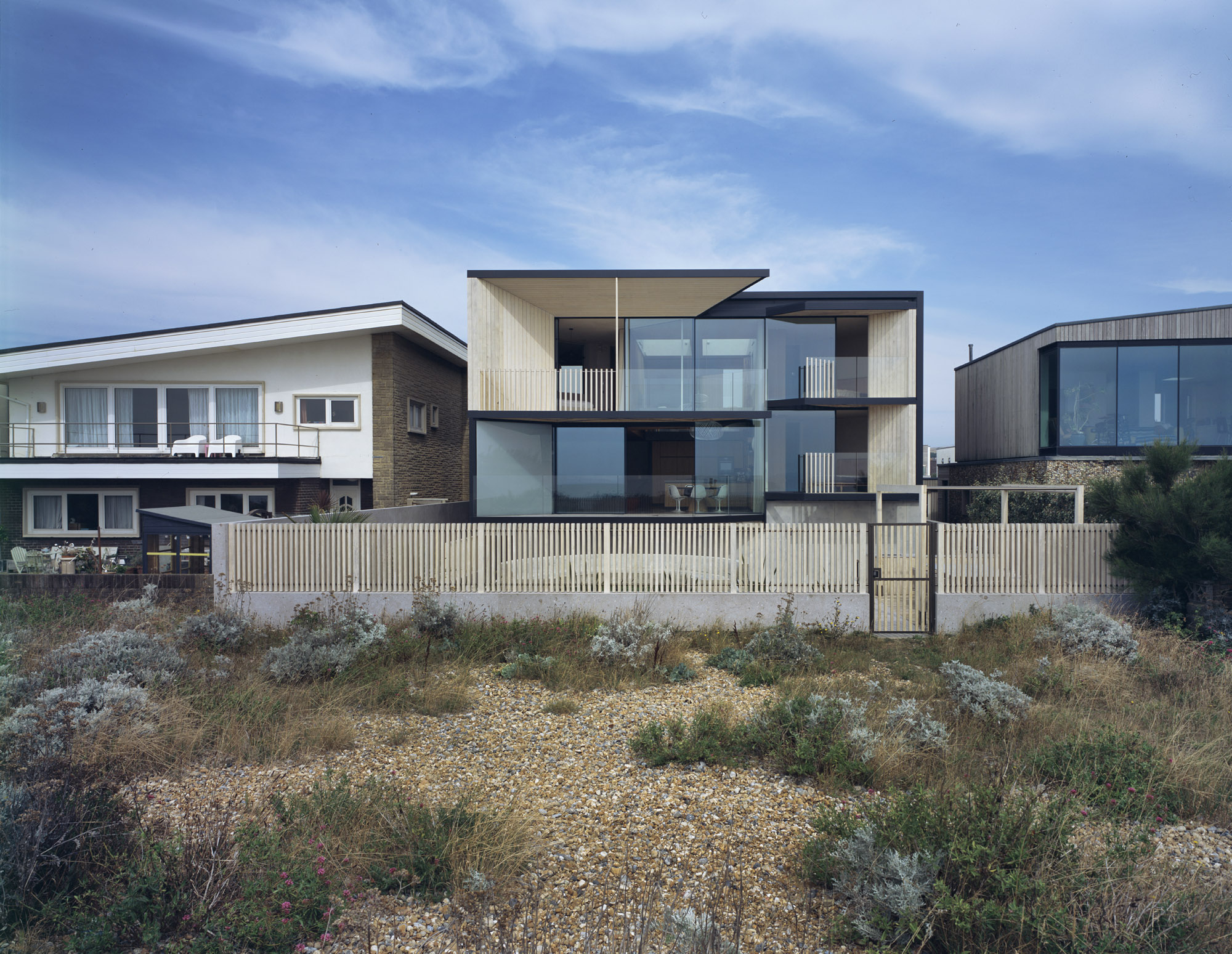
Step inside this Sussex beach house
Happily, and perhaps uncommonly in the UK, ‘the planners were up for everything’. The plot is flanked by a 1960s house with a monopitch roof on one side and a modern timber-clad beach house by ABIR Architects on the other. The new design replaces the existing structure in its entirety and has been designed to take advantage of views of the sea and shingle beach, complete with what the designer describes as ‘significant architectural moments’. In short, it’s bold and uncompromising, favouring striking geometry and composition that doesn’t restrict the interior programme.
‘We raised the building above the shingle to take advantage of the views,’ says Gibson. To achieve this, the main living spaces are set on a plinth, flanked by the garage, with a storage and changing room at the same level as the newly landscaped garden. From the triple-height entrance that rises to the full height of the house, an interlocking spiral staircase leads up half a level to the open-plan living room. On the east side, two levels, each with a bedroom, bathroom and utility room, adjoin the higher-ceilinged living room, while an internal void reaches up to the roof. Both sets of rooms have their own balconies, each using an angular form that allows light to cascade down.
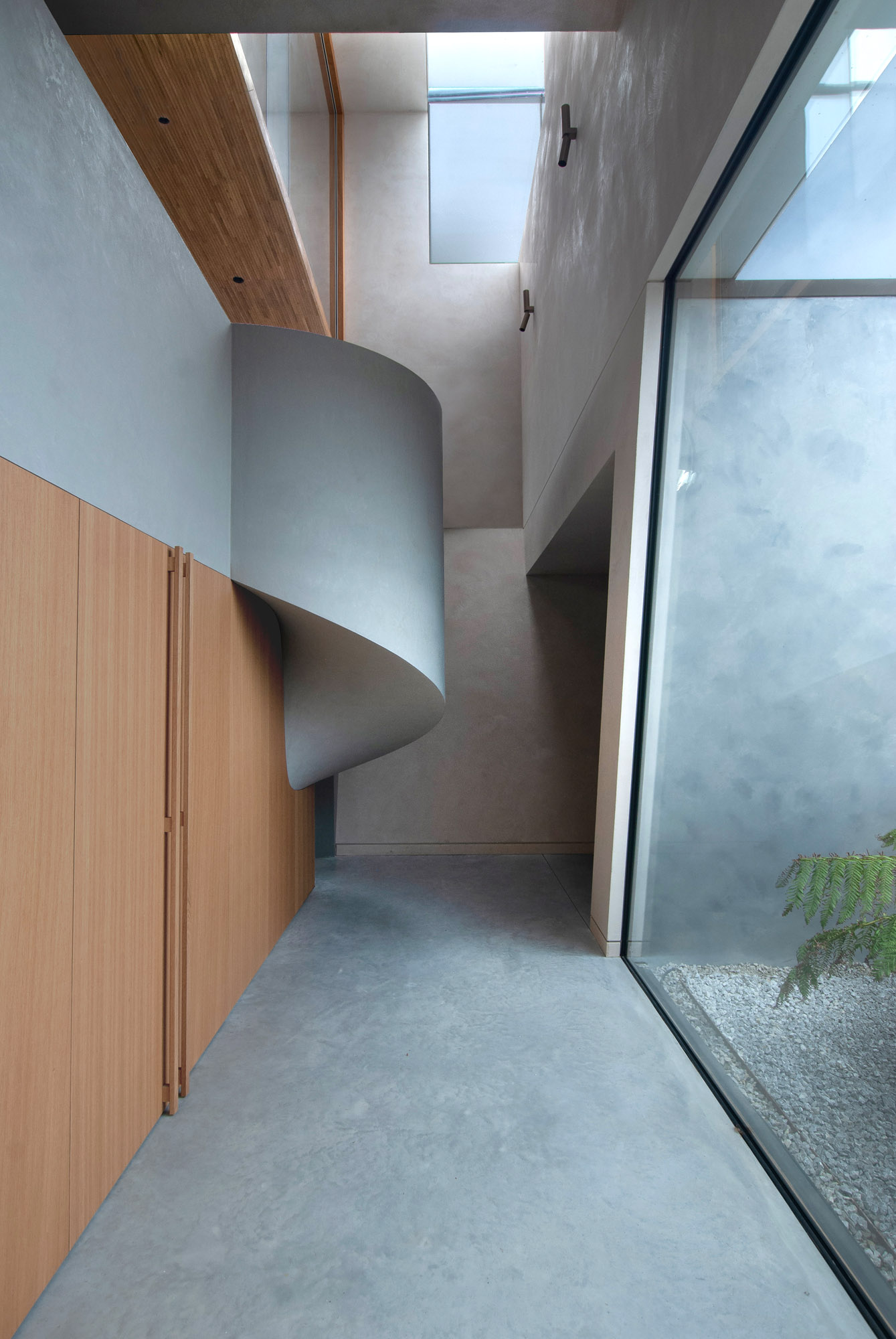
The plinth provides just enough elevation to give those all-important sea views. ‘You’re entering into a space that you can’t really appreciate from street level, starting with a high-ceilinged hallway,’ says Gibson. The spiral staircase turns back on itself in an S configuration to reorientate you towards the view as you climb to the living room. Here you’ll find a richly upholstered conversation pit, alongside the kitchen and dining area, with a tall window looking out to sea.
Gibson describes the house as a ‘vessel with objects within it’, and details such as the seashell-inspired staircase, red seating area, sculptural lighting and carved bath all act like elements within a cabinet. The main bedroom is also treated like a compartment, ‘a floating timber box’ above the living space, where the orientation shifts from a straight south-facing view towards the sea. Keen to preserve an empty horizon, the bed is angled at 45 degrees to the structure, facing south east so as to avoid direct views of the Rampion offshore wind farm. The other two seaward bedrooms face south west.
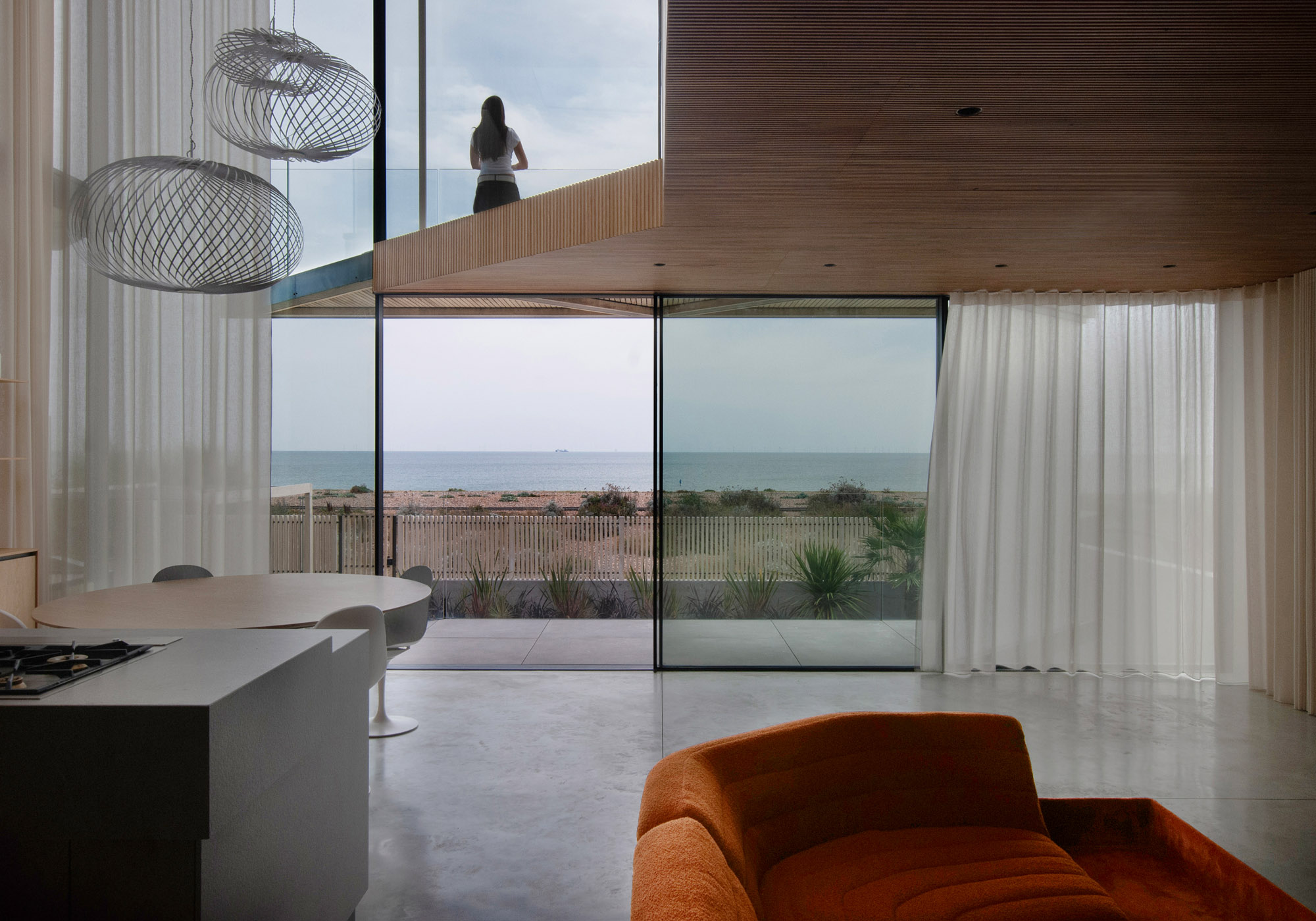
The house was constructed by a firm of local contractors with a long history of working on new builds in the area. The main bedroom and balcony are hung from the steel frame on the south side, while to the north, there’s more ambiguity. ‘We’re not responding to a rich streetscape, so we have a façade that doesn’t give too much away,’ says Gibson. ‘There’s a sense of privacy – it’s abstract, but also kind of formal.’ He cites the influence of Hiroshi Sugimoto’s seascape photography on the house, which is clad in panels of solid resin composite combined with frosted glass to give a sense of both mist and mystery. ‘On sunny days, it’s like a white box,’ he says, pointing out the ‘lantern’ detail at the upper right of the street façade. With three glazed sides – two in frosted glass, the top in clear – this element brings light down into the entrance hall, as well as the adjacent main bathroom.
Receive our daily digest of inspiration, escapism and design stories from around the world direct to your inbox.
The design is deliberately robust to cope with the marine climate, with the balconies providing solar control, and hard-wearing accoya wood used for slats and balustrades. Given the clients first approached Eldridge London back in 2017, the project is a testament to patience and trust. The result is bold and dynamic but also private and secluded, a structure that creates its own interior world while also enhancing the surrounding landscape.
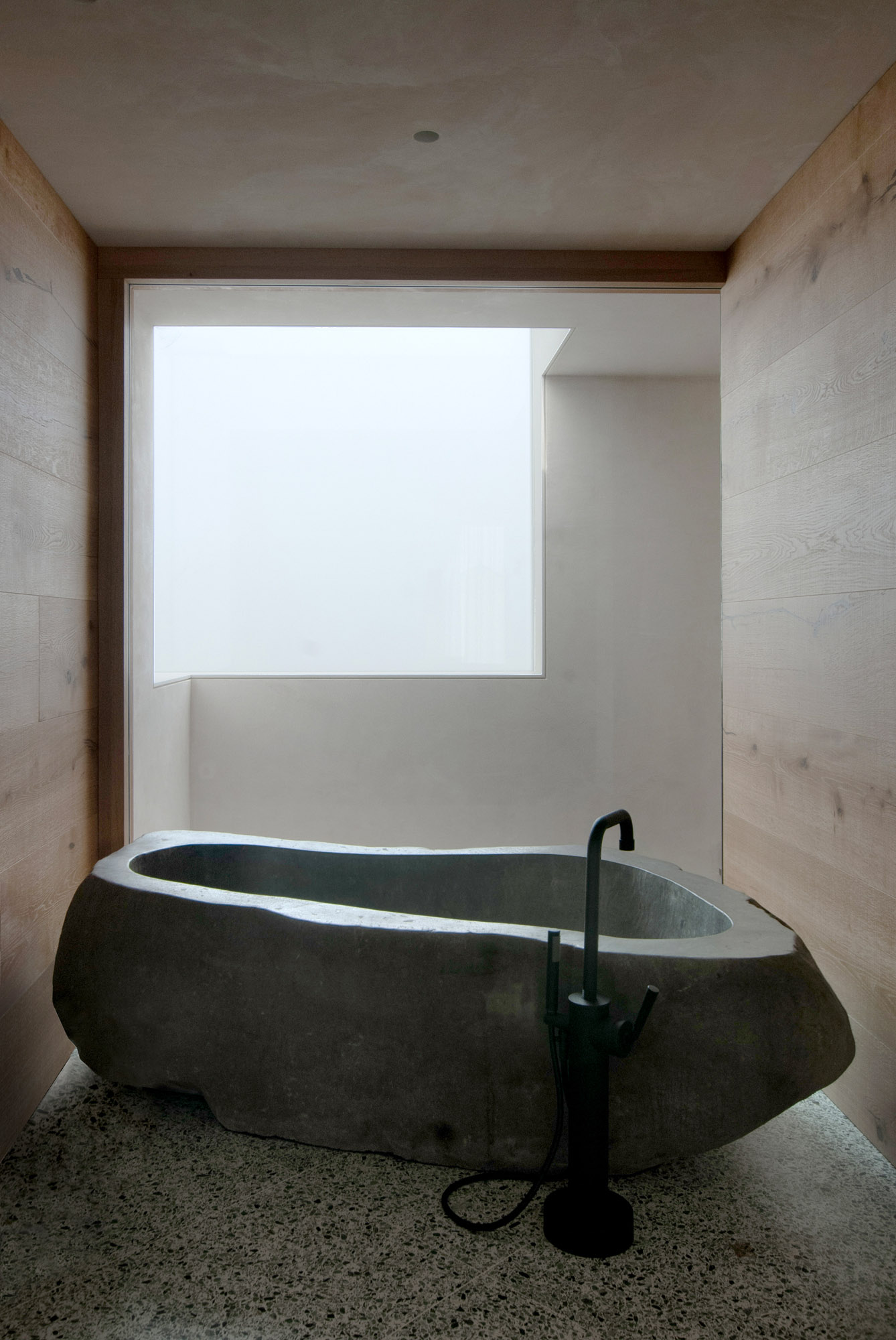
Jonathan Bell has written for Wallpaper* magazine since 1999, covering everything from architecture and transport design to books, tech and graphic design. He is now the magazine’s Transport and Technology Editor. Jonathan has written and edited 15 books, including Concept Car Design, 21st Century House, and The New Modern House. He is also the host of Wallpaper’s first podcast.
-
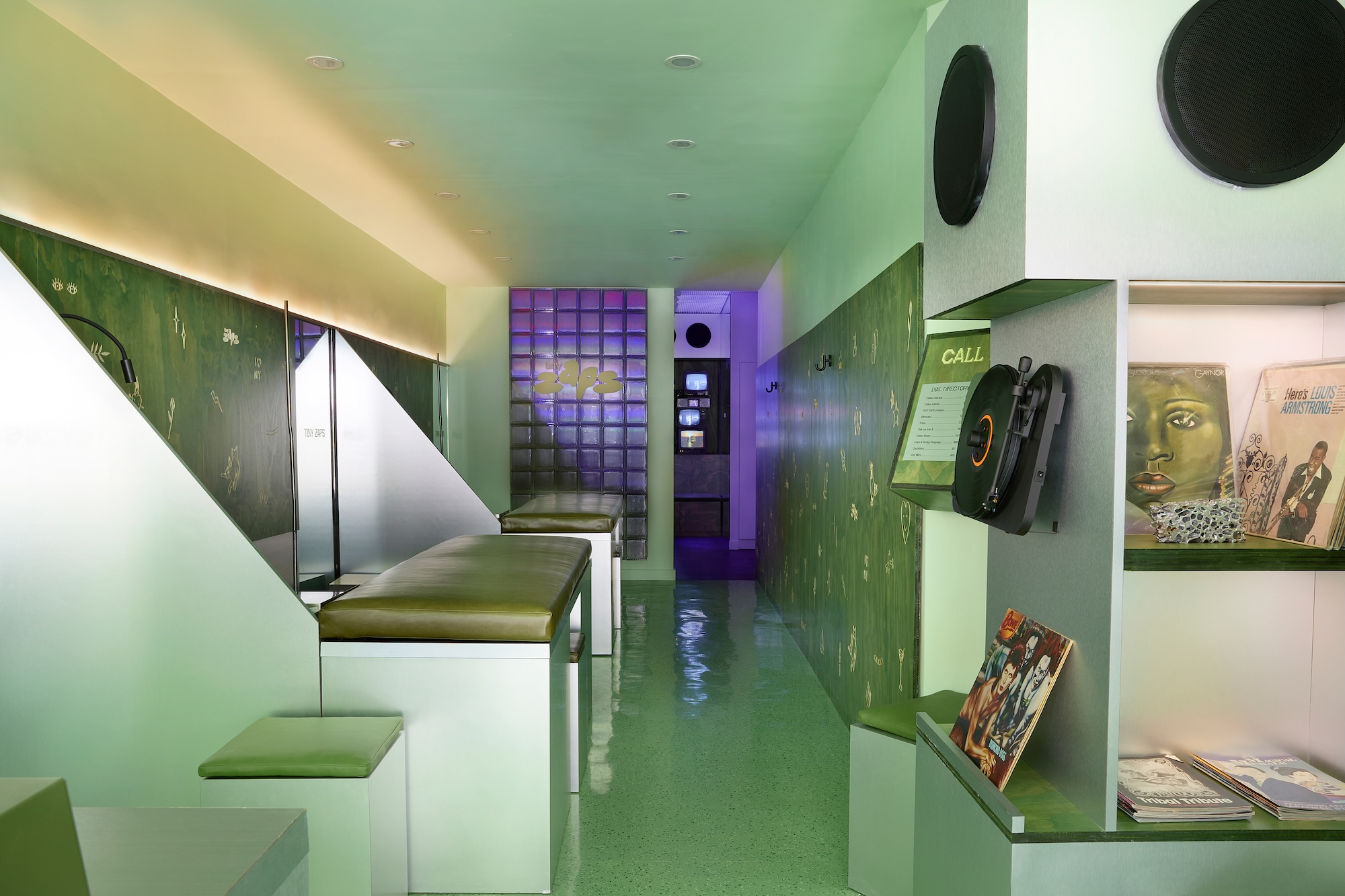 Terrified to get inked? This inviting Brooklyn tattoo parlour is for people who are 'a little bit nervous'
Terrified to get inked? This inviting Brooklyn tattoo parlour is for people who are 'a little bit nervous'With minty-green walls and an option to 'call mom', Tiny Zaps' Williamsburg location was designed to tame jitters
-
 Let’s hear it for the Chopard L.U.C Grand Strike chiming watch
Let’s hear it for the Chopard L.U.C Grand Strike chiming watchThe Swiss watchmaker’s most complicated timepiece to date features an innovative approach to producing a crystal-clear sound
-
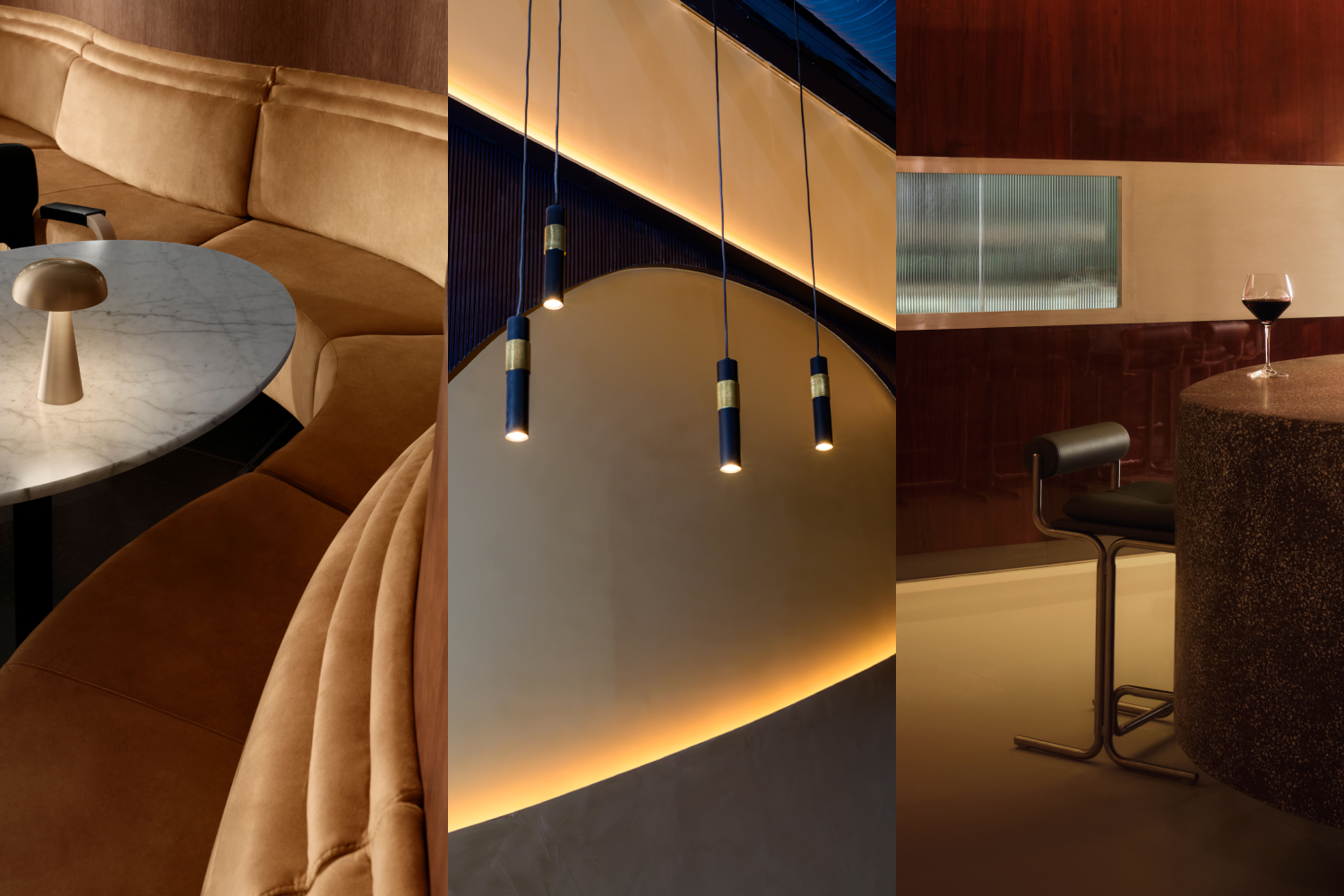 Form... and flavour? The best design-led restaurant debuts of 2025
Form... and flavour? The best design-led restaurant debuts of 2025A Wallpaper* edit of the restaurant interiors that shaped how we ate, gathered and lingered this year
-
 Arbour House is a north London home that lies low but punches high
Arbour House is a north London home that lies low but punches highArbour House by Andrei Saltykov is a low-lying Crouch End home with a striking roof structure that sets it apart
-
 A former agricultural building is transformed into a minimal rural home by Bindloss Dawes
A former agricultural building is transformed into a minimal rural home by Bindloss DawesZero-carbon design meets adaptive re-use in the Tractor Shed, a stripped-back house in a country village by Somerset architects Bindloss Dawes
-
 RIBA House of the Year 2025 is a ‘rare mixture of sensitivity and boldness’
RIBA House of the Year 2025 is a ‘rare mixture of sensitivity and boldness’Topping the list of seven shortlisted homes, Izat Arundell’s Hebridean self-build – named Caochan na Creige – is announced as the RIBA House of the Year 2025
-
 In addition to brutalist buildings, Alison Smithson designed some of the most creative Christmas cards we've seen
In addition to brutalist buildings, Alison Smithson designed some of the most creative Christmas cards we've seenThe architect’s collection of season’s greetings is on show at the Roca London Gallery, just in time for the holidays
-
 In South Wales, a remote coastal farmhouse flaunts its modern revamp, primed for hosting
In South Wales, a remote coastal farmhouse flaunts its modern revamp, primed for hostingA farmhouse perched on the Gower Peninsula, Delfyd Farm reveals its ground-floor refresh by architecture studio Rural Office, which created a cosy home with breathtaking views
-
 A revived public space in Aberdeen is named Scotland’s building of the year
A revived public space in Aberdeen is named Scotland’s building of the yearAberdeen's Union Terrace Gardens by Stallan-Brand Architecture + Design and LDA Design wins the 2025 Andrew Doolan Best Building in Scotland Award
-
 A refreshed 1950s apartment in East London allows for moments of discovery
A refreshed 1950s apartment in East London allows for moments of discoveryWith this 1950s apartment redesign, London-based architects Studio Naama wanted to create a residence which reflects the fun and individual nature of the clients
-
 In this Cotswolds home, drama meets minimalism
In this Cotswolds home, drama meets minimalismCotswolds home Hiaven house, with interiors designed by McLaren Excell, is a perfect blend of contemporary chic and calm, countryside drama